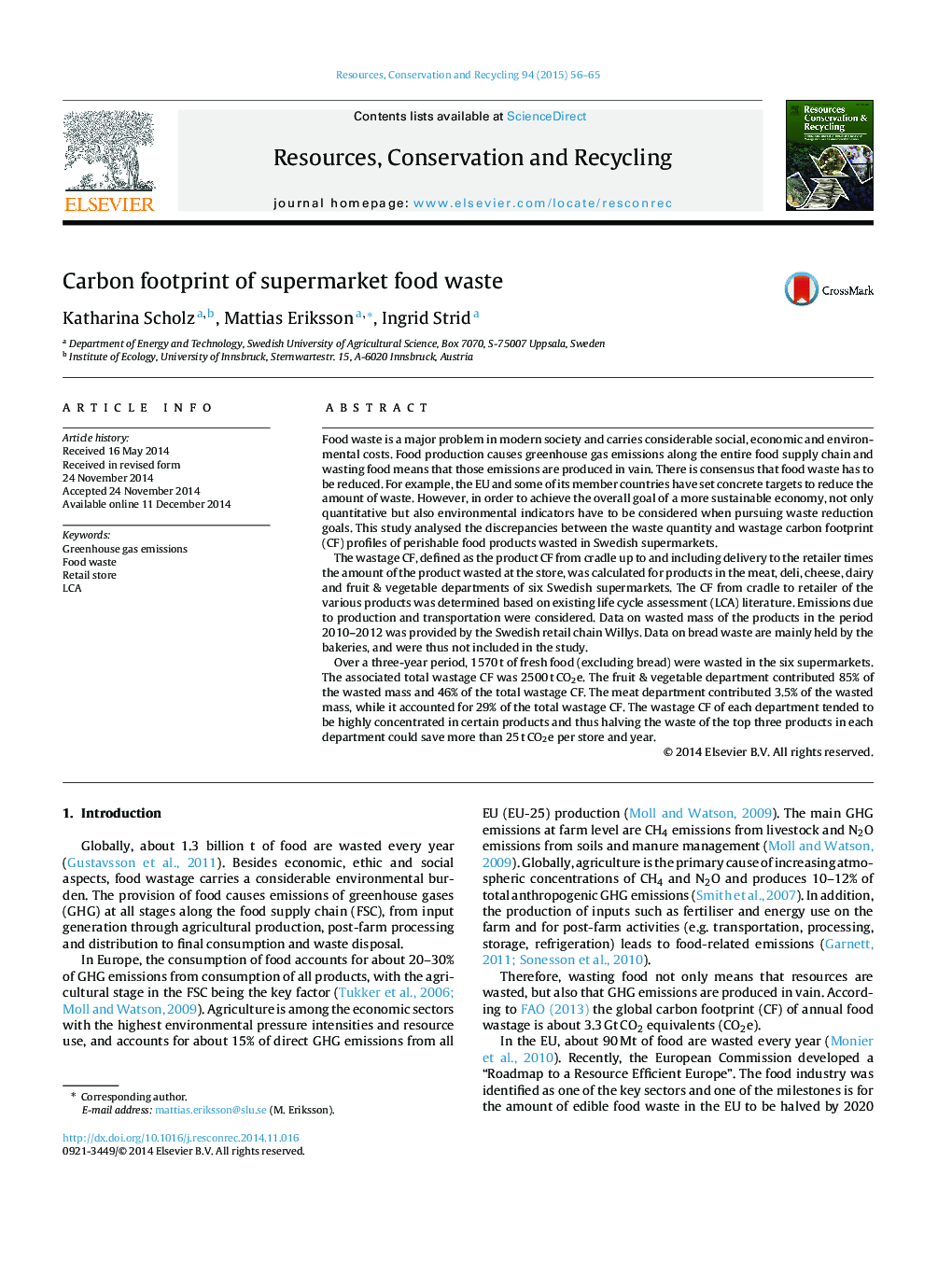| Article ID | Journal | Published Year | Pages | File Type |
|---|---|---|---|---|
| 1063004 | Resources, Conservation and Recycling | 2015 | 10 Pages |
•Food waste data on six Swedish supermarkets were analysed in terms of mass and CF.•The meat, deli, dairy, cheese and fruit & vegetable departments were included.•The total amount of food waste was 90 t yr−1 store−1.•The wastage CF was about 140 t CO2e yr−1 store−1.•Discrepancies between mass and CF profiles of the wasted food were identified.
Food waste is a major problem in modern society and carries considerable social, economic and environmental costs. Food production causes greenhouse gas emissions along the entire food supply chain and wasting food means that those emissions are produced in vain. There is consensus that food waste has to be reduced. For example, the EU and some of its member countries have set concrete targets to reduce the amount of waste. However, in order to achieve the overall goal of a more sustainable economy, not only quantitative but also environmental indicators have to be considered when pursuing waste reduction goals. This study analysed the discrepancies between the waste quantity and wastage carbon footprint (CF) profiles of perishable food products wasted in Swedish supermarkets.The wastage CF, defined as the product CF from cradle up to and including delivery to the retailer times the amount of the product wasted at the store, was calculated for products in the meat, deli, cheese, dairy and fruit & vegetable departments of six Swedish supermarkets. The CF from cradle to retailer of the various products was determined based on existing life cycle assessment (LCA) literature. Emissions due to production and transportation were considered. Data on wasted mass of the products in the period 2010–2012 was provided by the Swedish retail chain Willys. Data on bread waste are mainly held by the bakeries, and were thus not included in the study.Over a three-year period, 1570 t of fresh food (excluding bread) were wasted in the six supermarkets. The associated total wastage CF was 2500 t CO2e. The fruit & vegetable department contributed 85% of the wasted mass and 46% of the total wastage CF. The meat department contributed 3.5% of the wasted mass, while it accounted for 29% of the total wastage CF. The wastage CF of each department tended to be highly concentrated in certain products and thus halving the waste of the top three products in each department could save more than 25 t CO2e per store and year.
